Evaluation of Illizarov Technique in the Treatment of Open Comminuted Fractures of Tibia in Adult Patients
Md. Mehedi Newaz*, Md. Nazrul Islam, Md. Shahedur Rahman
Department of Orthopedic Surgery, Khulna Medical College, Khulna, Bangladesh
*Corresponding Author: Md. Mehedi Newaz, Professor and Head of the Department of Orthopedic Surgery, Khulna Medical College, Khulna, Bangladesh.
Received: 12 March 2024; Accepted: 20 March 2024; Published: 30 March 2024
Article Information
Citation: Md. Mehedi Newaz, Md. Nazrul Islam, Md. Shahedur Rahman. Evaluation of Illizarov Technique in the Treatment of Open Comminuted Fractures of Tibia in Adult Patients. Journal of Orthopedics and Sports Medicine. 6 (2024): 62-66.
View / Download Pdf Share at FacebookAbstract
Background: Open tibial fractures, though common in orthopedic treatment arena often involve with comminuted fractures. The Illizarov technique, a versatile and advantageous method, is popular for treating such fractures. This study aimed to evaluate the Illizarov technique in the treatment of open comminuted fractures of tibia in adult patients.
Methods: This prospective observational study was conducted at the Department of Orthopedic Surgery, Khulna Medical College and Private Clinics, Khulna, Bangladesh from November 2017 to December 2023. The study enrolled 115 patients with open comminuted tibial fractures, who were managed with the Illizarov external fixator. Participants were selected using purposive sampling and presented within two days of injury. Data were analyzed using MS Office tools.
Results: In this study, according to the Gustilo-Anderson classification, 51.30% of participants were categorized as Type I, 21.8% as Type II, 19.1% as Type III A, and 7.8% as Type III B. On the other hand, as per the ASAMI scoring system, 76.5% were classified as excellent, 15.7% as good, 5.2% as fair, and 2.6% as poor.
Conclusion: The Illizarov technique emerges as a favorable choice for managing open comminuted tibial fractures in adults, offering satisfactory outcomes, minimal blood loss, and prompt healing.
Keywords
Evaluation; Illizarov technique; ORIF; Open comminuted fractures; Tibia; Adult; Bone
Evaluation articles; Illizarov technique articles; ORIF articles; Open comminuted fractures articles; Tibia articles; Adult articles; Bone articles
Article Details
1. Introduction
Tibial fractures represent a common occurrence among long bone fractures, with approximately one-fourth of them being open fractures. The majority of open comminuted tibial fractures sustain from high-velocity trauma, such as road traffic accidents and falls from height. Managing open comminuted tibial shaft fractures poses challenges due to insufficient soft tissue coverage and compromised blood supply to the tibial shaft [1]. Distal tibial fractures (DTFs) constitute a small percentage (0.7%) of all skeletal fractures. Research conducted by Kannus et al. [2] in the Finnish population noted an increasing frequency of these fractures, with rates projected to triple by 2030. Open tibial fractures are a common occurrence, but their treatment remains a subject of controversy among orthopedic surgeons [3]. The prognosis of open comminuted tibial fractures depends on displacement, comminution, and soft tissue injury, necessitating advanced bone reconstruction and soft tissue coverage for effective healing, thus contributing to the high complication rate associated with these fractures [1]. Surgical interventions are often necessary when conservative treatment is not feasible [4]. Open reduction and internal fixation (ORIF) using plates and screws offer stability and facilitate joint mobilization, albeit delaying early weight bearing, crucial for rapid union [5]. Conversely, minimally invasive percutaneous plate osteosynthesis (MIPPO) presents a high healing rate and fewer soft-tissue complications. Alternatively, closed reduction and intramedullary nailing preserve extraosseous blood supply, minimize fracture hematoma disruption, and maintain the soft tissue envelope, allowing for early weight bearing [6]. While external fixators, including the Illizarov method, have become indispensable in fracture management, their use may compromise intramedullary blood supply and increase infection risk, particularly in open fractures [7]. Despite significant technological advancements, the basic principles of fixation techniques remain unchanged. Circular fixators, though not typically the primary choice for simple fractures, are preferred for complex fractures with soft tissue damage due to their versatility and reduced infection rates. However, they come with drawbacks such as patient psychological distress during follow-up, the need for compliance modifications, and a steeper learning curve compared to other fixation methods [8]. External fixation presents inherent challenges including the need for secondary operations, prolonged healing periods, and pin-site infections [9]. The Illizarov method has transformed the management of open comminuted diaphyseal tibial fractures, offering benefits such as improved union rates, early mobilization of the extremity, enhanced wound management, deformity correction, and limb lengthening capabilities [10]. The tensioned wire circular fixator, specifically, has proven valuable in the sub-acute and acute management of tibial fractures [10]. The objective of this study was to assess the effectiveness of the Illizarov technique in treating open comminuted tibial fractures in adult patients.
2. Methodology
This was a prospective observational study that was conducted at the department of Orthopedic Surgery, Khulna Medical College and Private Clinics, Khulna, Bangladesh from November 2017 to December 2023. As study subjects, 115 patients with comminuted tibial fractures, were purposively selected for early management with the Illizarov external fixator. Properly written consent was obtained from all participants before data collection. The study included patients aged 18 years and above with open comminuted fractures presenting within two days of injury, as per the inclusion criteria. Patients with closed fractures, pathological fractures, and type IIIC fractures were excluded from the study based on the exclusion criteria. Fractures were evaluated using AP and lateral X-rays and classified based on Gustilo's system [11] for open fractures. Patients with compound tibial fractures underwent prompt debridement in the operating room. Provisional management involved a long leg posterior slab or unilateral external fixator for dressing changes. Fluids, electrolytes, or whole blood transfusions were administered as needed for each patient. Outcomes regarding bone healing were evaluated by using the ASAMI scoring system [12]. Demographic and clinical data of all participants were documented, and data analysis was conducted using MS Office software.
3. Result
In this study, the highest number of participants (40.9%) were from the 18-30 years’ age group followed by 33.9% from the 31-40 years’ age group. Most of our cases (75%) were male and 25% were female. The distribution of open fracture types revealed that 51.3% of cases were classified as open type I, while open type II and open type III accounted for 33% and 15.7%, respectively (Table 1-4). Analysis of the mode of injury among participants revealed that the majority (80.9%) were due to road traffic accidents, followed by 11.3% from sports injuries and 7.8% from falls from height. Approximately two-thirds of the cases (64.4%) involved open fractures in the middle third of the tibia. Additionally, 21.7% and 13.9% were found in the proximal third and distal third, respectively (Figure 1). The Gustilo-Anderson classification in the study was as follows: 51.30% were classified as Type I, 21.8% as Type II, 19.1% as Type III A, and 7.8% as Type III B. The outcomes according to the ASAMI scoring system revealed that 76.5% (n=88) of patients were classified as excellent, 15.7% (n=18) as good, 5.2% (n=6) as fair, and 2.6% (n=3) as poor (Figure 2-5).
|
Age (Year) |
n |
% |
|
18-30 Yrs. |
47 |
0.409 |
|
31-40 Yrs. |
39 |
0.339 |
|
41-50 Yrs. |
14 |
0.122 |
|
51-60 Yrs. |
10 |
0.087 |
|
>60 Yrs. |
5 |
0.043 |
Table 1: Age distribution of participants (N=115).
|
Location |
n |
% |
|
Proximal third |
25 |
0.217 |
|
Middle third |
74 |
0.644 |
|
Distal third |
16 |
0.139 |
Table 2: Locations of open fractures (N=115).
|
Types |
n |
% |
|
I |
59 |
0.513 |
|
II |
25 |
0.218 |
|
III A |
22 |
0.191 |
|
III B |
9 |
0.078 |
Table 3: Gustilo-Anderson classification (N=115).
|
Outcomes |
n |
% |
|
Excellent |
88 |
0.765 |
|
Good |
18 |
0.157 |
|
Fair |
6 |
0.052 |
|
Poor |
3 |
0.026 |
Table 4: Outcomes by ASAMI scoring system (N=115).
4. Discussion
The study aimed to assess the effectiveness of the Illizarov technique in treating open comminuted fractures of the tibia in adult patients. In many studies, functional outcomes were assessed by using the modified Karlstrom-Olerud scoring [13]. In our study, bone healing outcomes were assessed using the ASAMI scoring system [12]. The majority of our participants (40.9%) belonged to the 18-30 years’ age group, followed by 33.9% in the 31-40 years’ age group. The gender distribution showed that 75% of cases were male and 25% were female, consistent with findings from a recent study [14]. Regarding the distribution of open fracture types, 51.3% of cases were classified as open type I, while open type II and open type III accounted for 33% and 15.7%, respectively, which closely resembled the findings of another study [15]. Approximately two-thirds of the cases (64.4%) involved open fractures in the middle third of the tibia, while 21.7% and 13.9% were found in the proximal third and distal third, respectively. According to the Gustilo-Anderson classification, 51.30% were categorized as Type I, 21.8% as Type II, 19.1% as Type III A, and 7.8% as Type III B. These results closely resembled those of another recent study [16]. According to the ASAMI scoring system, 76.5% (n=88) of patients were classified as excellent, 15.7% (n=18) as good, 5.2% (n=6) as fair, and 2.6% (n=3) as poor. These outcomes align with those of previous studies [14-16]. Open comminuted fractures of the tibia pose a considerable challenge for trauma surgeons [17]. Treatment strategies are influenced by factors such as soft tissue condition, degree of comminution, and articular involvement [18]. Past outcomes and initial efforts at internal fixation have contributed to the establishment of AO guidelines [18]. However, in fractures characterized by extensive soft tissue injury and metaphyseal comminution, plate and screw fixation may result in complications such as infections and delayed healing [19,20]. The insights gained from this study could be valuable for future research in this area.
Limitation of the Study
The study's single-centered design and small sample size may limit the generalizability of its findings to the entire country. Thus, caution is advised in extrapolating the results to accurately represent the broader scenario across the nation.
5. Conclusion
Given its ability to yield satisfactory outcomes, minimize blood loss, and promote prompt healing, the Illizarov technique emerges as a compelling option for managing open comminuted fractures of the tibia in adult patients. This method offers several advantages, including its effectiveness in achieving union and facilitating bone regeneration. Its versatile nature allows for customization according to the specific needs of each patient, further enhancing its suitability as the method of choice for addressing complex fractures of the tibia. By leveraging the benefits of the Illizarov technique, healthcare providers can optimize treatment outcomes and expedite the recovery process for adult patients with open comminuted tibial fractures.
References
- Lua JY, Tan VH, Sivasubramanian H, et al. Complications of Open Tibial Fracture Management: Risk Factors and Treatment. Malaysian Orthopaedic Journal 11 (2017): 18-19.
- Kannus P, Palvanen M, Niemi S, et al. Increasing number and incidence of low-trauma ankle fractures in elderly people: Finnish statistics during 1970-2000 and projections for the future. Bone 31 (2002): 430-433.
- Webb LX, Bosse MJ, Castillo RC, et al. LEAP Study Group. Analysis of surgeon-controlled variables in the treatment of limb-threatening type-III open tibial diaphyseal fractures. J Bone Joint Surg 89 (2007): 923-928.
- Newman SD, Mauffrey CP, Krikler S. Distal metadiaphyseal tibial fractures. Injury 42 (2011): 975-984.
- Mukherjee S, Arambam MS, Waikhom S, et al. Interlocking Nailing Versus Plating in Tibial Shaft Fractures in Adults: A Comparative Study. J Clin Diagn Res 11 (2017): RC08-RC13.
- Foote CJ, Guyatt GH, Bhsc KNV, et al. Which Surgical Treatment for Open Tibial Shaft Fractures Results in the Fewest Reoperations ? A Network Meta-analysis. Clin Orthop Relat Res (2015): 2179-2192.
- Bhandari M, Guyatt G, Tornetta P, et al. Randomized trial of reamed and undreamed intramedullary nailing of tibial shaft fractures. J Bone Joint Surg Am 90 (2008): 2567-2578.
- Bilal D, Sami S, Erdem Ö, et al. New application technique of circular fixator for the treatment of open tibial fractures: circular fixator-hinge technique. Ulus Travma Acil Cerr Derg 19 (2013): 543-547.
- Yongchuan L, Xi J, Qinghe G, et al. Treatment of distal tibial shaft fractures by three different surgical methods: a randomized, prospective study International Orthopaedics (SICOT) 38 (2014): 1261-1267.
- Tirth V, Hiren S, Aalok S, et al. Retrospective study of open tibial diaphyseal fractures, type IIIA and IIIB by Illizarov method IJOS 3 (2017): 507-512.
- Tscherne HG, Gotzen L. Fractures with soft tissue injuries. Berlin: Springer-Verlag (1984).
- Patil S, Montgomery R. Management of complex tibial and femoral nonunion using the Illizarov technique, and its cost implications. J Bone Joint Surg Br 2006 88-B (1984): 928-932.
- Karlstrom G, Olerud S. Fractures of the tibial shaft: a critical evaluation of treatment alternative. Clin Orthop 105 (1974): 82-115.
- Ghosh AL, Ashraf Ullah SK. Evaluation of Illizarov Technique in the Treatment of Open Fractures of Tibia: A Prospective Observational Study. Sch J App Med Sci 11 (2023): 1582-1586.
- Sushrut B, Seth S. Prevalence of osteoporosis in India: an observation of 31238 adults. Int J Res Orthop 7 (2021): 362-368.
- Debnath D, Islam J, Huda N, et al. Evaluation of Illizarov technique in the treatment of open fractures of tibia. International Surgery Journal 7 (2020): 3570-3575.
- Joveniaux P, Ohl X, Harisboure A, et al. Distal tibia fractures: management and complications of 101 cases. Int Orthop 34 (2010): 583-588.
- McFerran MA, Smith SW, Boulas HJ, et al. Complications encountered in the treatment of pilon fractures. J Orthop Trauma 6 (1992): 195-200.
- Teeny SM, Wiss DA. Open reduction and internal fixation of tibial plafond fractures. Variables contributing to poor results and complications. Clin Orthop Relat Res 292 (1993): 108-117.
- Tull F, Borrelli J. Soft-tissue injury associated with closed fractures: evaluation and management. J Am Acad Orthop Surg 11 (2003): 431-438.

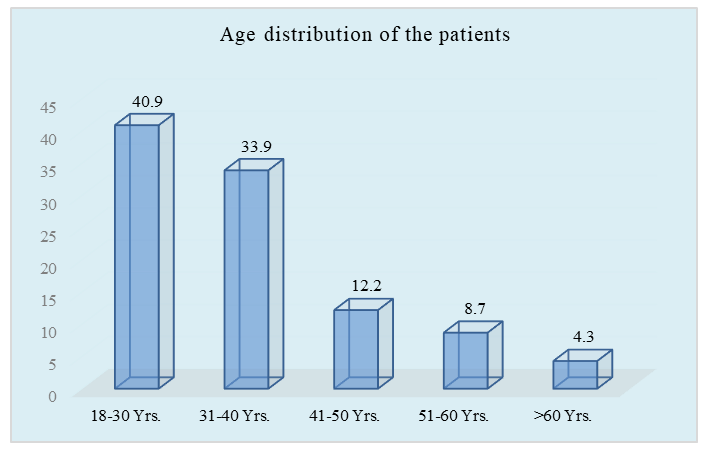
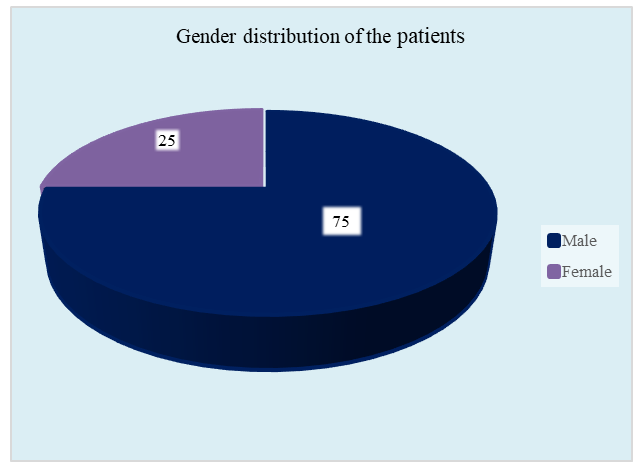
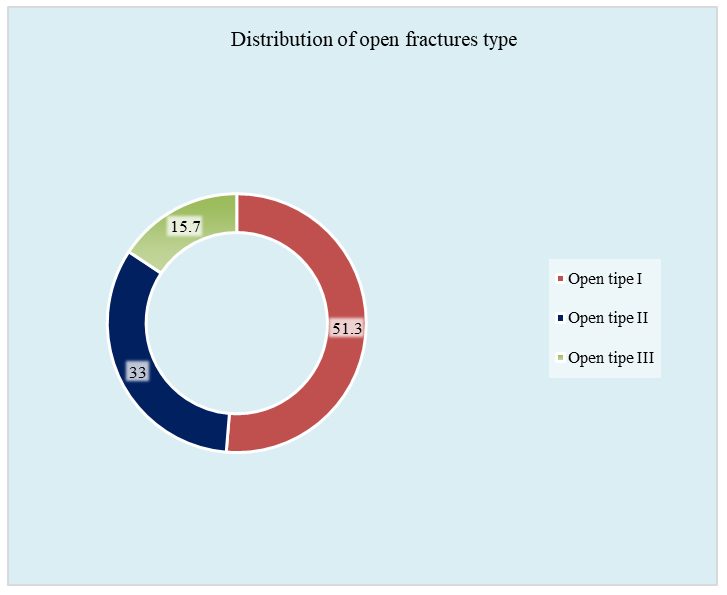
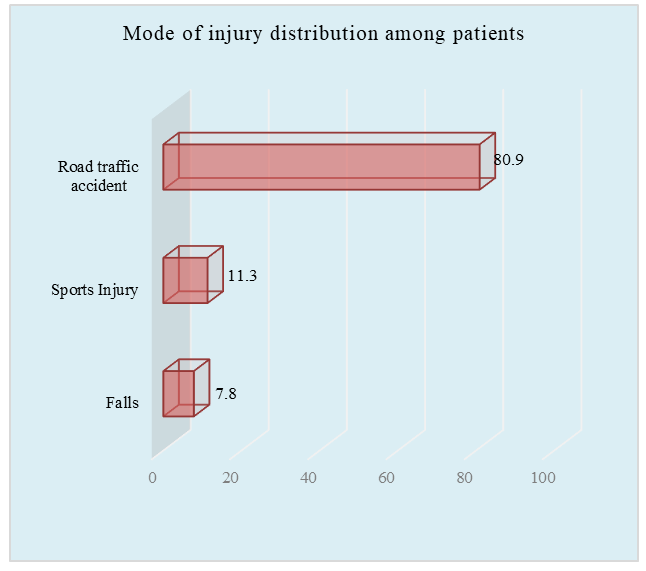
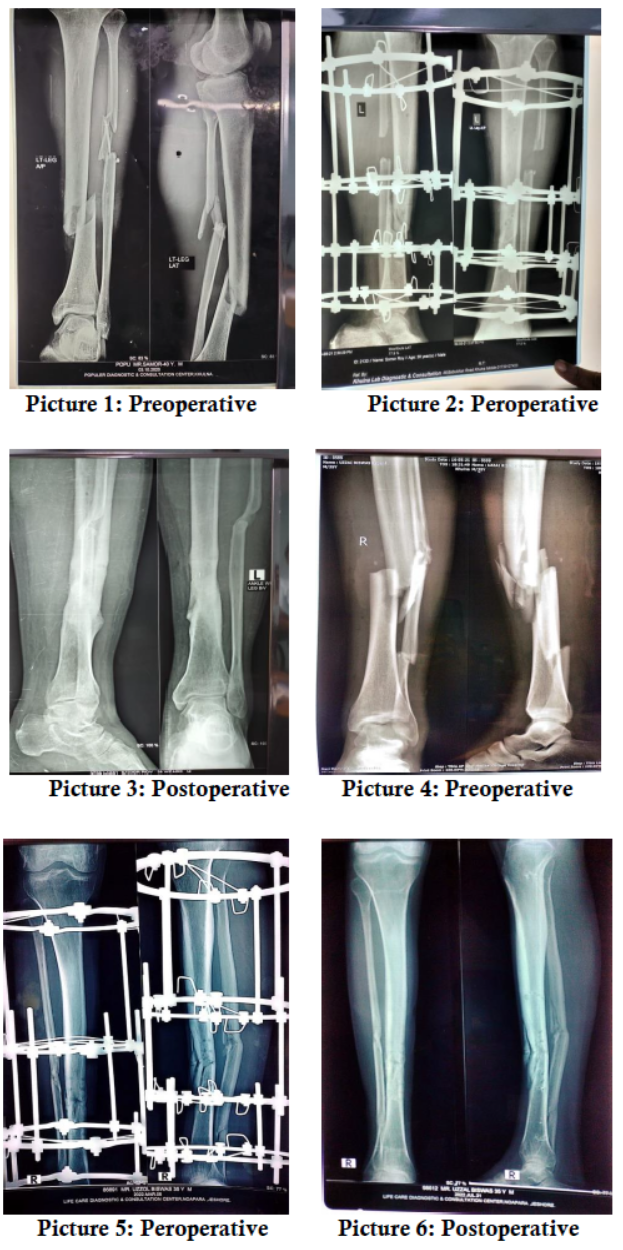

 Impact Factor: * 5.3
Impact Factor: * 5.3 Acceptance Rate: 73.64%
Acceptance Rate: 73.64%  Time to first decision: 10.4 days
Time to first decision: 10.4 days  Time from article received to acceptance: 2-3 weeks
Time from article received to acceptance: 2-3 weeks 